SNVSAA7B December 2015 – July 2021 LM53625-Q1 , LM53635-Q1
PRODUCTION DATA
- 1 Features
- 2 Applications
- 3 Description
- 4 Revision History
- 5 Device Comparison
- 6 Pin Configuration and Functions
- 7 Specifications
- 8 Detailed Description
-
9 Application and Implementation
- 9.1 Application Information
- 9.2
Typical Applications
- 9.2.1 General Application
- 9.2.2 Fixed 5-V Output for USB-Type Applications
- 9.2.3 Fixed 3.3-V Output
- 9.2.4 Adjustable Output
- 9.3 What to Do and What Not to Do
- 10Power Supply Recommendations
- 11Layout
- 12Device and Documentation Support
- 13Mechanical, Packaging, and Orderable Information
7.8 Typical Characteristics
Unless otherwise specified the following conditions apply: VIN = 12 V, TA = 25°C. Specified temperatures are ambient.
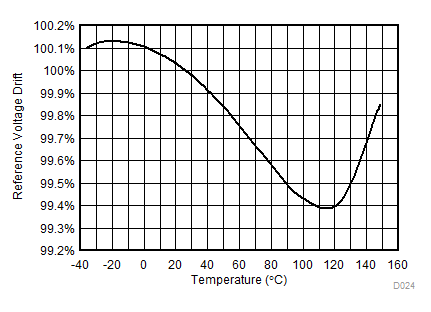
| VIN = 12 V |
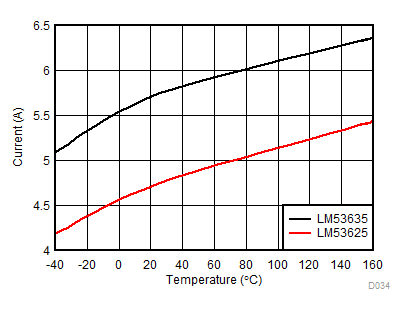
| VIN = 12 V |

| VIN = 12 V |
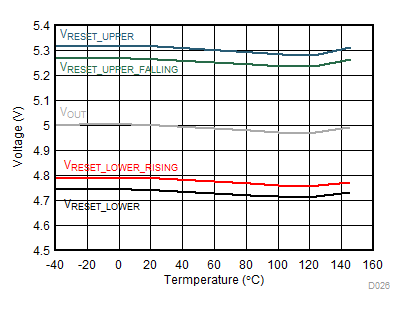 Figure 7-7 RESET Threshold Fixed 5-V output
Figure 7-7 RESET Threshold Fixed 5-V output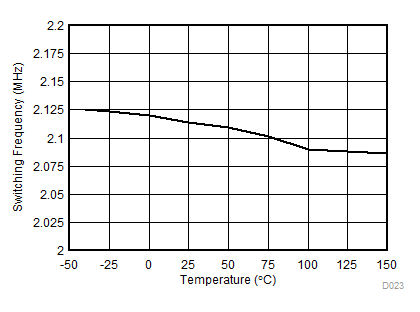
| VIN = 12 V |
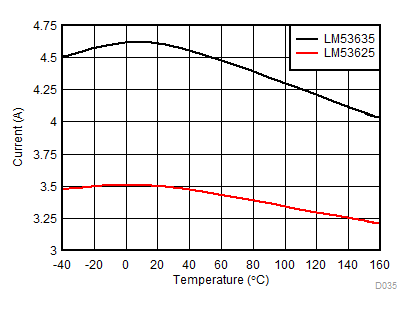
| VIN = 12V |
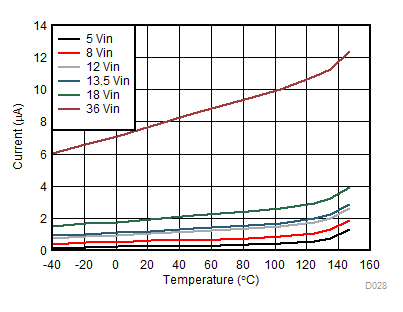
| VIN = 12 V |
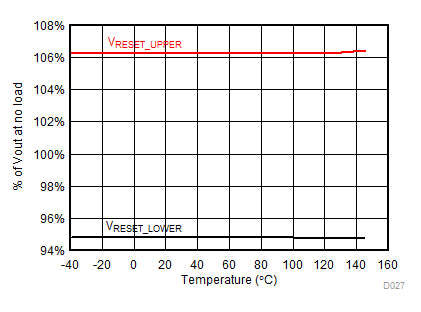 Figure 7-8 RESET Threshold as Percentage of Output Voltage
Figure 7-8 RESET Threshold as Percentage of Output Voltage